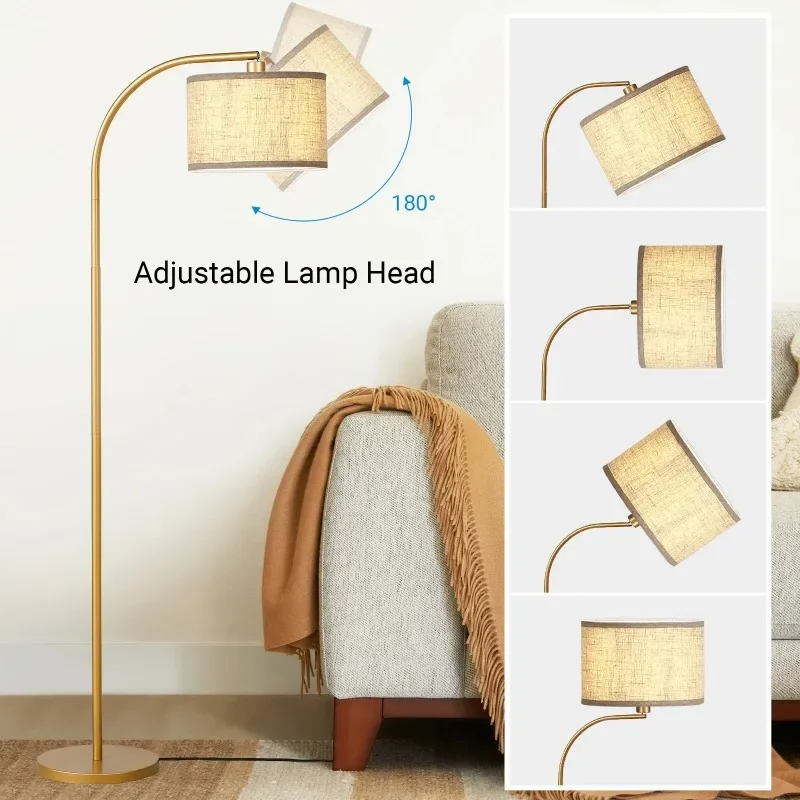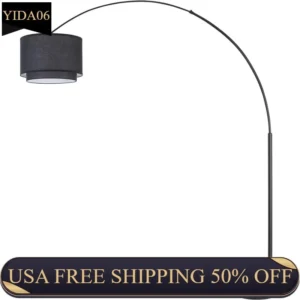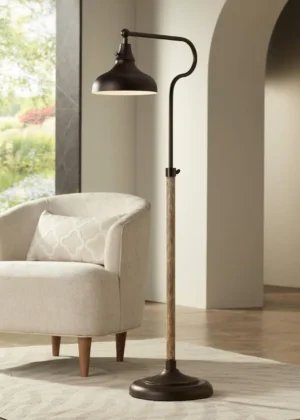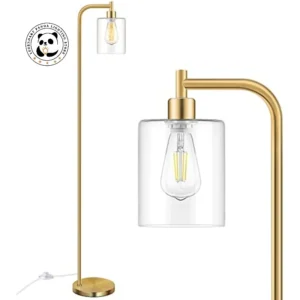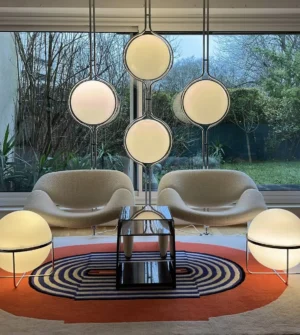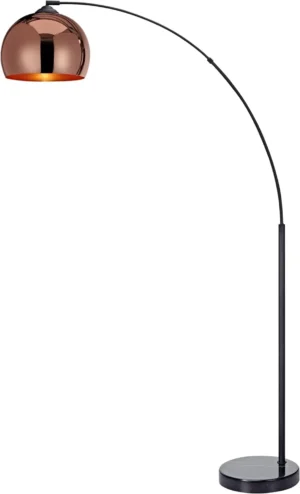Understanding the Physics Behind Arc Floor Lamp Stability
Arc floor lamps stand out in interior design with their distinctive curved arm that elegantly extends outward and over furniture, providing direct light where it’s needed most. But this beautiful cantilevered design creates unique stability challenges that other lamp styles don’t face.
At its core, arc lamp stability is all about physics. The curved arm extending outward creates what scientists call a lever—specifically a first-class lever system. As the arm extends away from the base, it creates leverage that tries to tip the lamp forward. The farther the arm extends and the heavier the shade, the stronger this tipping force becomes.
This is where the counterweight principle comes into play. A properly designed arc lamp uses the base as a counterweight to balance the outward pull of the extended arm. Think of it like a seesaw—the weight of the base on one side needs to counteract the weight and distance of the arm and shade on the other side.
The center of mass is another critical concept. For any object to remain stable, its center of mass must be positioned so that gravity pulls it down within the footprint of its base. When an arc lamp’s arm extends outward, it shifts the center of mass forward. If this center of mass moves beyond the edge of the base, the lamp will tip over.
Understanding these understanding arc lamp base types helps explain why base design is so crucial to lamp stability. Common causes of instability include bases that are too light, too narrow, or positioned incorrectly relative to the lamp’s arm.
The relationship between arm length and base requirements is particularly important. Longer arms create more leverage, requiring proportionally heavier bases to maintain stability. This is why oversized arc lamps often feature particularly substantial marble base arc floor lamps that can weigh 30 pounds (14 kg) or more—their dense material provides necessary counterweight in a relatively compact footprint.
Key Factors Contributing to Arc Floor Lamp Base Stability
When it comes to arc lamp stability, four main factors work together to keep your lamp securely upright. Understanding these elements is essential whether you’re shopping for a new lamp or trying to improve the stability of one you already own.
These factors—base weight, footprint and shape, material quality, and arm design—interact with each other in important ways. For instance, a lamp with an exceptionally wide base might require slightly less weight, while a lamp with an extra-long arm will need both a heavier and wider base for proper balance.
By understanding these key stability components, you’ll be better equipped to make informed decisions and implement effective stabilize floor lamp base complete guide solutions for your lighting needs. Let’s explore each factor in detail.
Base Weight: The Primary Stability Factor
Weight is the foundation of arc lamp stability. It serves as the essential counterbalance to the extending arm and shade. Without sufficient weight, physics simply won’t allow the lamp to remain upright.
The optimal base weight depends largely on the lamp’s size and arm reach:
- Small arc lamps (arm extends 15-25 inches): 15-20 pounds (7-9 kg) base
- Standard arc lamps (arm extends 25-40 inches): 20-30 pounds (9-14 kg) base
- Oversized arc lamps (arm extends 40+ inches): 30+ pounds (14+ kg) base
Material choice plays a crucial role in achieving these weight requirements. The most stable arc lamps typically use:
- Marble: Provides excellent weight-to-size ratio with aesthetic appeal
- Cast iron: Extremely dense and durable, often used in industrial designs
- Concrete: Modern option offering substantial weight
- Solid steel: Heavy and reliable for contemporary designs
Weight distribution within the base matters just as much as total weight. The best weighted bases arc lamps concentrate weight toward the side opposite the arm’s direction, creating a more effective counterbalance. Some premium designs even feature asymmetrical bases with more material on the counterweight side.
Many arc lamp issues stem from manufacturers trying to cut costs by using lighter materials or hollow bases filled with sand or other less expensive weighting materials. While these may look substantial, they often don’t provide adequate counterweight for true stability.
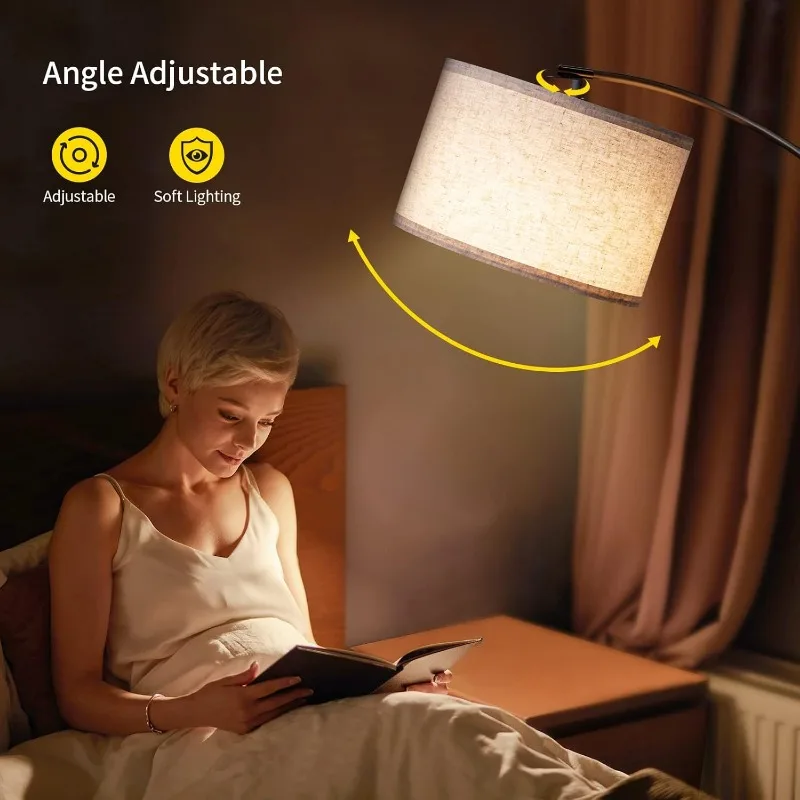
Base Footprint and Shape: The Stability Foundation
The size and shape of your arc lamp’s base create the literal foundation for its stability. A wider footprint distributes weight more effectively and provides greater resistance to tipping forces.
Different base shapes offer varying stability advantages:
Round bases: Provide consistent stability in all directions, ideal for lamps that might be viewed or accessed from multiple angles. However, they typically offer less forward/backward stability than rectangular options.
Square bases: Offer equal stability in all four directions, making them versatile for various placements.
Rectangular bases: Usually provide the best stability along their longest dimension. When positioned with the long edge perpendicular to the arc direction, they create excellent resistance to tipping.
The base’s height profile also matters significantly. Lower-profile bases with a lower center of gravity provide better stability than taller, narrower bases of equal weight. This is why many well-designed stable base designs arc floor lamps feature relatively flat, wide bases rather than tall, narrow ones.
As a general guideline, the base footprint width (in the direction perpendicular to the arm) should be at least one-third the total arm extension for adequate stability. So a lamp with a 30-inch arm reach should have a base at least 10 inches wide in the critical direction.
The relationship between footprint and weight works in tandem—a wider footprint can sometimes compensate for slightly less weight, while a heavier base might allow for a somewhat smaller footprint. The best designs optimize both factors.
Material Quality and Construction: Building Lasting Stability
Beyond just providing weight, the materials used in your arc floor lamp determine its long-term stability. Quality materials resist deterioration that could compromise structural integrity over time.
Look for these quality indicators when assessing lamp construction:
- Seamless joints with no visible gaps or wobble
- Non-plastic connectors at stress points (especially where the arm meets the pole)
- Metal components made from solid steel or brass rather than hollow aluminum
- Reinforcement plates at connection points
- Even finish with no manufacturing defects
The connection points deserve special attention as they’re common failure points in less expensive lamps. The base-to-pole connection should feel rock-solid, with no play or movement. Similarly, the pole-to-arm connection needs to be especially robust as it bears significant stress from the cantilever effect.
Some wood arc floor lamp designs showcase excellent craftsmanship with solid hardwood components and reinforced joinery techniques. While wood is lighter than stone or metal, quality wooden lamps use clever design and precise balance to achieve stability without excessive weight.
Higher-end arc lamps often feature hidden engineering details that enhance stability—internal metal reinforcement in the base, precision-weighted components, and custom-designed connection hardware. These details may not be immediately visible but make a significant difference in both stability and longevity.
Arm Design and Extension: Balancing the Cantilever
The arm is the defining feature of an arc lamp, but its design significantly impacts stability requirements. Longer arms create more leverage against the base, requiring proportionally more counterweight to remain stable.
Fixed-arm lamps generally offer better inherent stability than adjustable models because their weight distribution is constant and optimized by the manufacturer. Adjustable arc floor lamp designs add versatility but introduce additional stability challenges as changing the arm position alters the balance dynamics.
The arm’s material and construction also affect stability. Solid metal arms provide consistent weight distribution and rigidity, while hollow arms may be lighter but can bend slightly under the weight of heavier shades. Some premium designs incorporate internal counterweights within the arm itself to improve balance.
Shade weight and position create the final piece of the stability equation. Heavier shades or multiple-light configurations place more stress on the arm and require more substantial bases. The ideal design balances shade size and weight appropriately for the arm length and base specifications.
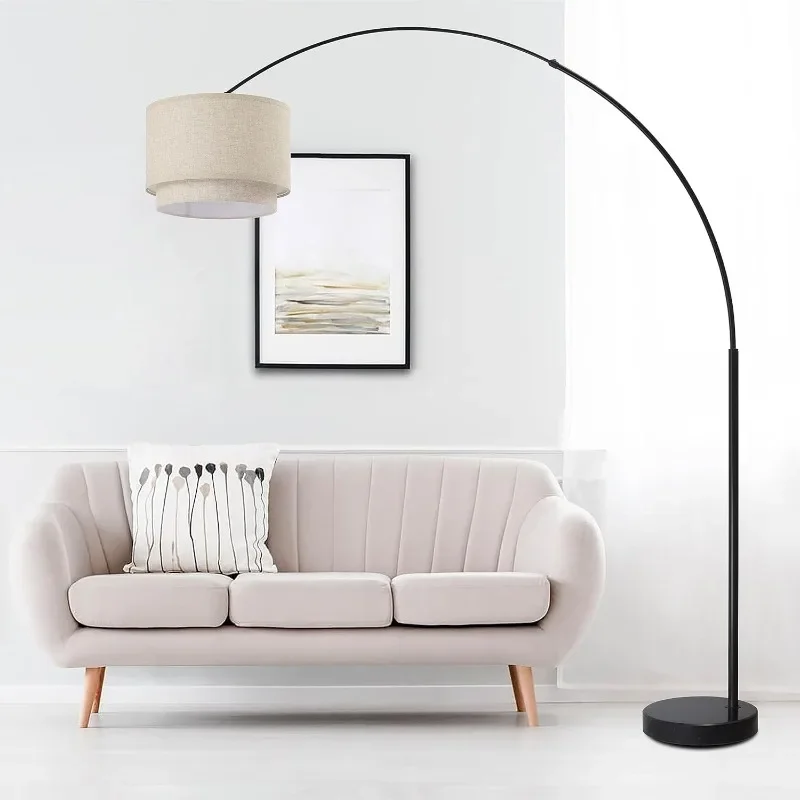
Some innovative designs feature arms with adjustable counterbalance systems that use springs or weights to maintain proper balance regardless of position. These sophisticated mechanisms allow for greater flexibility without sacrificing stability.
What to Look For When Buying a Stable Arc Floor Lamp
Finding a stable arc lamp requires careful attention to several key features. Use this comprehensive checklist when evaluating potential purchases:
Base Specifications
- Weight: Check the product specifications for base weight (aim for 20+ pounds/9+ kg for standard lamps)
- Materials: Look for solid marble, metal, concrete, or other dense materials
- Dimensions: Measure the base footprint, particularly in the direction perpendicular to the arm
- Low profile: Prefer bases with lower height and wider footprint for better stability
Construction Quality
- Solid connections: Examine how the base connects to the pole (should be sturdy with no wobble)
- Materials: Check for solid metal components rather than plastic at stress points
- Weighted center: Look for designs with weight concentrated opposite the arm direction
- Reinforcement: Look for metal plates or extra support at connection points
Arm Evaluation
- Proportion: Check that the arm length is appropriate for the base size and weight
- Rigidity: Test for minimal flexing when the shade is attached
- Connections: Examine how securely the arm attaches to the vertical pole
- Adjustability: If adjustable, check that all positions maintain stability
Customer Feedback
- Stability reviews: Look specifically for comments about wobbling, tipping, or stability
- Assembly notes: Check for mentions of difficult assembly that might affect stability
- Long-term performance: Look for reviews from customers who’ve owned the lamp for months/years
- Child/pet homes: If applicable, find reviews from households similar to yours
Understanding the ultimate guide arc floor lamps can help you interpret manufacturer specifications correctly. Terms like “weighted base” are subjective—look for specific weight numbers whenever possible.
For different home environments, consider additional factors. Carpeted floors may require larger base footprints as the soft surface provides less stability. High-traffic areas benefit from lamps with exceptionally stable designs or strategic placement options.
When comparing options, remember that stability usually correlates with price—achieving proper counterbalance requires substantial materials and engineering that add to manufacturing costs. Choosing perfect arc floor lamp involves balancing aesthetic preferences with practical stability needs for your specific space and usage patterns.
Troubleshooting and Improving Arc Floor Lamp Stability
Even well-designed arc lamps can develop stability issues over time, and budget-friendly models often benefit from stability enhancements. The good news is that most arc lamp stability problems can be effectively addressed with the right approach.
Common issues include slight wobbling, gradual leaning, or a sense that the lamp might tip when bumped. These problems typically stem from loose connections, inadequate base weight, or placement on challenging surfaces.
In the following sections, we’ll explore practical solutions ranging from simple adjustments to more substantial modifications. These approaches can transform an unstable arc lamp into a secure, reliable lighting fixture without compromising its aesthetic appeal or function.
Whether you’re dealing with a brand-new lamp that feels less stable than expected or an older lamp that’s developed issues over time, these how stabilize arc floor lamp base techniques can help restore confidence in your lighting choice.
Initial Assessment: Checking Assembly and Connections
Before making any modifications to your lamp, conduct a thorough inspection to identify potential assembly issues that may be compromising stability:
Start by gently rocking the lamp to identify any loose connections or movement points.
Check all visible screws and fasteners, tightening any that have loosened over time. Pay special attention to the connection between the base and vertical pole.
If your lamp has adjustable components, ensure they’re properly locked in their intended positions.
Review the manufacturer’s assembly instructions to confirm all parts are correctly installed. Improper arc floor lamp assembly is a common cause of stability problems.
Examine the base for any damage, cracks, or warping that might affect its ability to provide a stable foundation.
Ensure the lamp is on a level surface—even slight floor unevenness can amplify stability issues.
When tightening connections, be careful not to overtighten screws on lamp parts made from softer materials like wood or plastic, as this can strip the threading or crack components.
For lamps with multiple sections in the vertical pole, check that they’re fully seated and secured. Sometimes these connections loosen over time, creating a slight lean that affects overall stability.
Once you’ve addressed any assembly issues, test the lamp’s stability by gently pushing the shade in different directions. The lamp should return to its original position without excessive wobbling or tipping concerns.
Adding Weight to Your Lamp Base: Effective Solutions
When tightening connections isn’t enough, adding weight to your lamp base often provides the most dramatic stability improvement. There are several approaches to consider:
Commercial Solutions:
- Purpose-made lamp weights: Flat, donut-shaped weights designed to sit under existing lamp bases
- Fillable weight bags: Fabric pouches that conform to your base shape and can be filled with sand or metal shot
- Adhesive metal weights: Thin, heavy strips that can be attached to the underside of the base
DIY Approaches:
- Sand bags: Create small fabric pouches filled with sand and position them on the base opposite the arm direction
- Free weights: Small barbell or dumbbell weights can be secured to the base underside
- Filled containers: For hollow bases, carefully remove the bottom plate (if possible) and fill with sand, metal shot, or even smooth stones
For hollow lamp bases, filling the interior space provides an elegant solution that doesn’t affect appearance:
1. Check if your lamp has a removable bottom plate or access point
2. If accessible, carefully fill with dry sand, metal BBs, or similar dense material
3. Seal thoroughly to prevent any material from leaking out
4. If no access exists, focus on external weight solutions
When adding external weights, position them on the side opposite the arm direction to maximize the counterbalance effect. Using adhesive mounting strips or hook-and-loop fasteners helps keep floor lamps from leaning by ensuring added weights don’t shift over time.
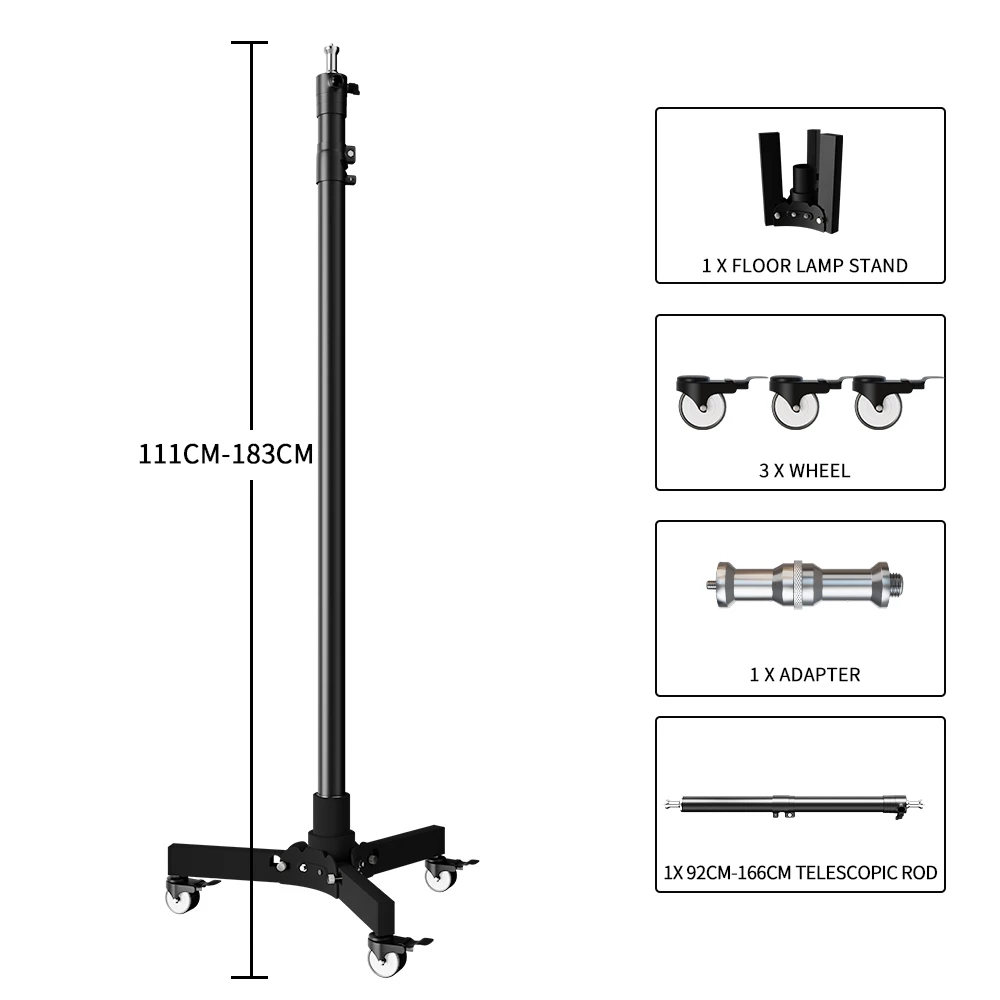
For lamps with particularly severe stability issues, consider creating a custom weighted base plate from a heavy material like steel or stone that sits beneath the original base, effectively extending both the weight and footprint simultaneously.
Surface Solutions: Stabilizing on Different Flooring
The surface beneath your arc lamp significantly affects its stability. Different flooring types present unique challenges that can be addressed with specific solutions:
For Carpeted Floors:
- Carpet can compress unevenly under lamp weight, creating instability
- Place a rigid platform (wood, acrylic, or metal) under the base to distribute weight evenly
- Consider carpet grippers or non-slip pads beneath the platform
- For deep pile carpets, look for “carpet caster cups” designed specifically to provide stability
For Uneven Floors:
- Use furniture levelers or adjustable feet to compensate for slight floor variations
- Place thin shims under specific areas of the base to create a level foundation
- Consider self-leveling bases that automatically adjust to uneven surfaces
For Hard Floors (Wood, Tile, Laminate):
- Add non-slip rubber or silicone pads to prevent sliding without scratching
- Use clear rubber bumpers at key points on the base underside
- Consider microsuction pads that create temporary adhesion without residue
- For extra protection, use felt pads under any metal base components
The goal is to create maximum contact between the lamp base and floor surface while ensuring the lamp won’t slide when bumped. This is especially important for homes with large oversized arc floor lamps where even slight movement can affect stability due to the extended arm length.
For particularly problematic surfaces, consider combination approaches—for example, using both a rigid platform and non-slip pads to address both carpet compression and sliding issues simultaneously.
Strategic Placement: Positioning for Enhanced Stability
Sometimes the simplest stability solution involves thoughtful placement rather than physical modifications. Strategic positioning can significantly improve arc lamp stability:
- Position the lamp so the arm extends along a wall rather than into the room, allowing the wall to act as a secondary support if the lamp leans slightly
- Place the lamp in a corner with the arm extending diagonally, creating a natural barrier against tipping in multiple directions
- Arrange furniture to partially block the arc lamp’s extension, providing a safety catch that prevents complete tipping
- Consider the traffic patterns in your room and position the lamp away from high-movement areas to reduce accidental bumping
Height and reach adjustments can also improve stability without compromising function:
* For adjustable lamps, use the minimum extension necessary for your lighting needs
* Position the base closer to the area being illuminated to reduce the required arm extension
* Adjust the height to reduce leverage while still maintaining proper light position
Proper arc floor lamp cord management also contributes to stability and safety. Ensure power cords are neatly managed to prevent tripping hazards that could pull the lamp over. Consider cord covers or strategic routing behind furniture to minimize risks.
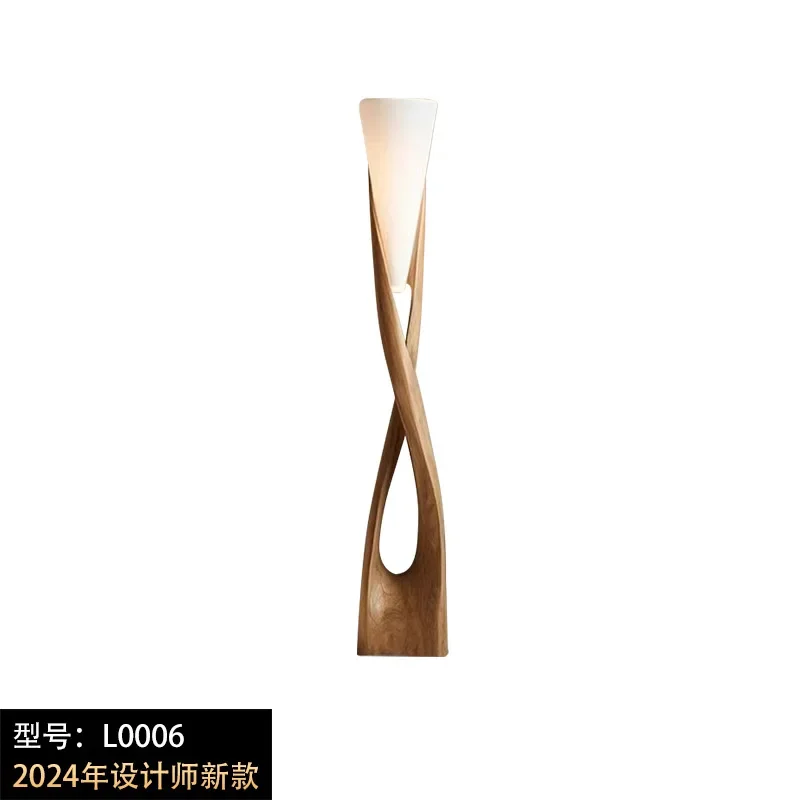
When arranging furniture, consider creating a “stability zone” around your arc lamp—an area where tall items like bookcases or cabinets could prevent a full tip-over if the lamp were accidentally knocked.
Safety Anchoring: Preventing Tip-Overs
For households with active children, pets, or in areas with high activity, anchoring provides the ultimate stability solution. Modern anchoring systems are both effective and relatively discreet:
Furniture Straps
- L-shaped brackets that secure the lamp base to the floor
- Adjustable straps that connect the lamp’s vertical pole to a nearby wall
- Clear mounting solutions designed to be minimally visible
Installation Guidelines:
- Identify the optimal anchor point based on your lamp style and room layout
- For wall anchoring, locate a wall stud for maximum security
- For floor anchoring, choose appropriate hardware for your flooring type
- Position straps or brackets where they’ll be least visible
- Ensure straps have some flexibility to prevent damage if the lamp is bumped
When how to secure tall floor lamps, focus on anchoring the vertical pole rather than the arm itself, as this provides better stability without placing stress on the adjustable components.
For temporary solutions or rental properties, consider tension-mounted systems that don’t require permanent installation. These create pressure between floor and ceiling to stabilize tall objects without wall damage.
Anti-tip straps are particularly important in households with young children, as the Consumer Product Safety Commission identifies furniture tip-overs (including lamps) as a significant safety hazard. Even modest anchoring can prevent serious accidents.
Safety Considerations for Arc Floor Lamps
Arc floor lamps present unique safety considerations due to their design. Understanding and addressing these risks ensures both stability and peace of mind.
Tipping Hazards: The extended arm creates a natural leverage point that can lead to tipping if bumped or pulled. This risk increases significantly in homes with children or pets who might grab or climb on the lamp. Preventing arc lamps tipping should be a priority, especially in active households.
Electrical Safety Concerns: When an arc lamp tips, it can create electrical hazards beyond the physical impact. The bulb may break, exposing electrical components, or the fall might damage internal wiring. Always use bulbs that remain cool to the touch (like LEDs) to minimize fire risk if the lamp is knocked over.
Warning Signs That Require Immediate Attention:
* Visible leaning or tilting from the vertical position
* Unusual wobbling when lightly touched
* Loose connections between components
* Cracked or damaged base
* Unusual sounds when adjusting the lamp
Regular Safety Checks:
* Monthly stability assessment (gentle push test)
* Inspection of all connection points
* Verification that any added weights remain secure
* Checking that anchor straps haven’t loosened
* Ensuring the base remains level and fully supported
For homes with children, consider establishing “lamp safety rules” about not playing near or hanging items from the lamp. Similarly, pet owners might need to create deterrents to prevent animals from bumping or climbing on lamp components.
Property damage is another consideration—an unstable arc lamp that tips can damage furniture, décor items, and potentially cause injury. The cost of proper stabilization is minimal compared to potential damage from a fallen lamp.
Contemporary Arc Floor Lamp, Large Arc Floor Lamp, Oversized Arched Floor Lamp
$460.63 Select options This product has multiple variants. The options may be chosen on the product pageAdjustable Arc Floor Lamp, Bronze Arc Floor Lamp
Price range: $440.95 through $558.52 Select options This product has multiple variants. The options may be chosen on the product pageBrass Arc Floor Lamp, Contemporary Arc Floor Lamp, LED Arc Floor Lamp
Price range: $490.72 through $522.04 Select options This product has multiple variants. The options may be chosen on the product pageChrome Arc Floor Lamp, LED Arc Floor Lamp
Price range: $304.95 through $1,210.40 Select options This product has multiple variants. The options may be chosen on the product pageContemporary Arc Floor Lamp, Large Arc Floor Lamp, Marble Base Arc Floor Lamp
$224.94 Select options This product has multiple variants. The options may be chosen on the product pageMid-Century Arc Floor Lamp, Wood Arc Floor Lamp
$230.86 Select options This product has multiple variants. The options may be chosen on the product page
Maintenance for Long-Term Arc Lamp Stability
Regular maintenance plays a crucial role in preserving your arc lamp’s stability over time. Even well-designed lamps can develop issues through normal use and environmental factors.
Quarterly Maintenance Routine:
* Tighten all visible fasteners and connection points
* Check the base for any signs of damage or wear
* Verify that any added weights or anchoring systems remain secure
* Ensure the lamp stands perfectly vertical (use a smartphone level app)
* Test all adjustment mechanisms for proper function
* Clean the base thoroughly, removing any debris that might create unevenness
Moving Your Arc Lamp Safely:
1. Always grasp the lamp by its vertical pole, never by the arc arm
2. Lift straight up to avoid creating lateral pressure on connections
3. For heavier lamps, have a second person help guide the arm while moving
4. When repositioning, verify the base sits completely flat on the floor
5. Re-check all connections after moving
Component Maintenance:
Pay special attention to parts that affect stability, particularly adjustment knobs and connection points. Apply a small amount of appropriate lubricant to adjustable mechanisms if they become stiff, as forcing tight adjustments can damage components.
Seasonal Considerations:
Humidity changes can affect some materials, particularly wood components. Monitor wooden 3-light arc floor lamp bases for any seasonal expansion or contraction that might affect stability. Similarly, carpet compression can change through the year as humidity fluctuates, potentially creating new stability challenges.
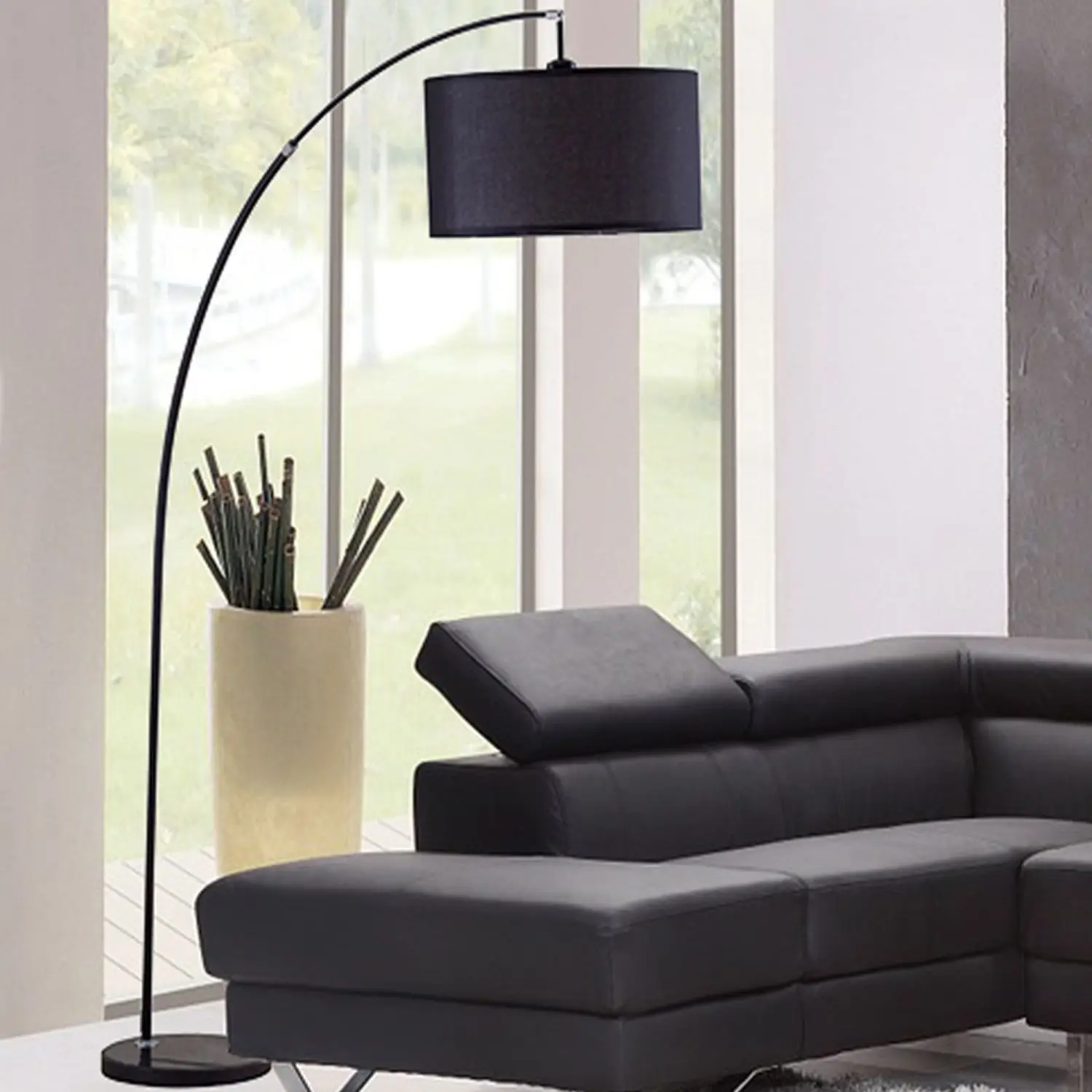
When replacing bulbs or shades, always verify the weight is similar to the original components. Significantly heavier replacements can alter the lamp’s balance and create new stability issues that weren’t present with the original configuration.
Premium Arc Floor Lamps with Superior Stability Features
The highest quality arc floor lamps incorporate sophisticated engineering features that enhance stability while maintaining elegant aesthetics. These premium design elements represent the perfect marriage of form and function.
Advanced Base Designs:
* Multi-material bases that combine visual lightness with hidden weight
* Asymmetrical weight distribution optimized for counterbalance
* Extended footprints that remain visually pleasing through clever proportioning
* Integrated floor protection that enhances grip while preventing damage
Material Innovations:
* Aircraft-grade aluminum that provides strength with reduced weight
* Engineered stone composites offering the weight of marble with improved durability
* Carbon fiber components delivering exceptional strength-to-weight ratios
* Contemporary arc floor lamp designs featuring specialized alloys that allow thinner profiles while maintaining structural integrity
Engineering Excellence:
* Internal counterweight systems that allow more graceful base proportions
* Precision-balanced components that distribute weight optimally
* Custom-developed connection hardware that eliminates wobble
* Shock-absorbing elements that reduce vibration and enhance stability
Stability Without Compromise:
Premium manufacturers have solved common arc lamp challenges through thoughtful engineering rather than simply adding bulk. The result is lamps that maintain perfect stability without sacrificing the visual lightness that makes arc lamps so appealing.
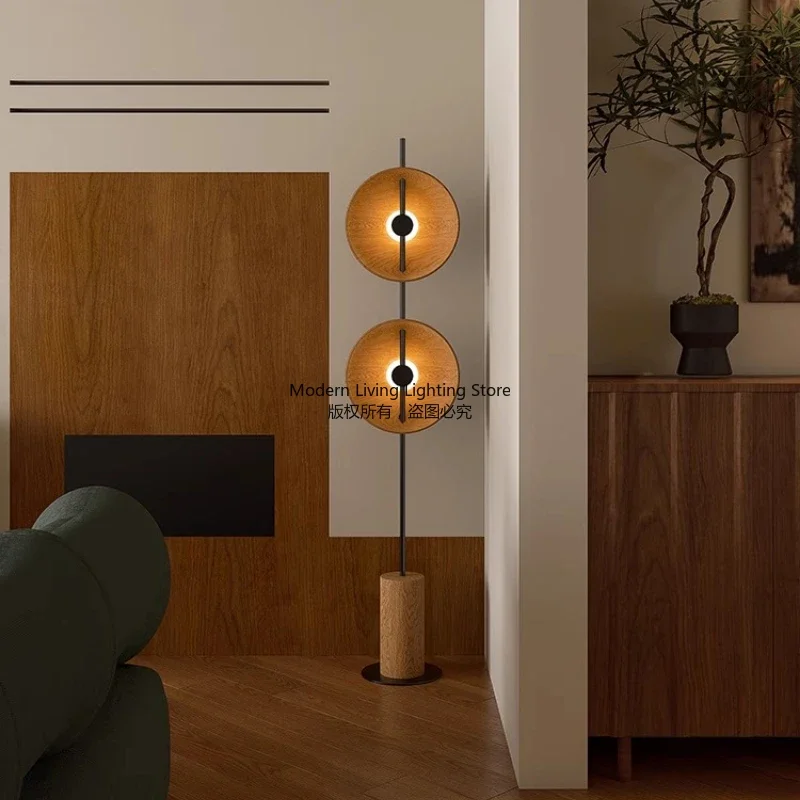
These high-end features explain the significant price difference between basic and premium arc lamps. When evaluating whether the investment is worthwhile, consider both the superior stability and the extended lifespan these quality differences typically provide.
Frequently Asked Questions About Arc Lamp Stability
Are all arc floor lamps inherently unstable?
No, properly designed arc floor lamps with adequate base weight and appropriate proportions can be very stable. Instability usually results from design compromises, particularly in lower-priced models that skimp on base weight or use less optimal materials.
What’s the average weight of a stable arc lamp base?
For a standard arc floor lamp with an arm extending 25-40 inches (63-102 cm), a stable base typically weighs between 20-30 pounds (9-14 kg). Larger lamps with longer arms require proportionally heavier bases, sometimes exceeding 40 pounds (18 kg).
How do I determine if my existing arc lamp is stable enough?
Perform the “gentle push test”—with the lamp on a level surface, apply light pressure to the shade in various directions. A stable lamp will resist tipping and return to its original position with minimal wobbling. If it feels precarious or tips easily, it needs additional stabilization.
Can arc lamps be used safely on carpeted floors?
Yes, but they often require additional consideration. Place a flat, rigid platform under the base to prevent it from sinking unevenly into the carpet. This platform should extend slightly beyond the base dimensions for maximum stability.
What materials make the most stable arc lamp bases?
Marble, solid metal (especially cast iron or steel), concrete, and stone provide excellent stability due to their density. These materials pack maximum weight into a relatively compact footprint, improving the counterbalance effect.
How does the shade style affect overall stability?
Lighter shades improve stability by reducing weight at the end of the arm, decreasing the leverage effect. When replacing shades, avoid significantly increasing weight unless you also enhance the base stability. The shape and air resistance of the shade can also affect stability if placed in areas with air movement.
Do LED bulbs improve stability compared to traditional bulbs?
Yes, LED arc floor lamp designs benefit from improved stability because LED bulbs are significantly lighter than traditional incandescent or halogen alternatives. This weight reduction at the furthest point of the lever system has a noticeable positive effect on overall balance.
Is it normal for arc lamps to wobble slightly?
A small amount of flexibility in the arm is normal, especially with longer reaches, but the base should remain firmly planted. The lamp should always return to its original position after minor disturbances. Persistent wobbling indicates a stability issue that should be addressed.
Can I move my arc lamp frequently without affecting stability?
Frequent moving can gradually loosen connections and affect stability. If you need to reposition your lamp often, choose a model with a handle and wheels specifically designed for mobility, and perform regular maintenance checks on all connections.
How much does a stable, quality arc floor lamp typically cost?
While prices vary widely, expect to invest at least $150-200 for a properly designed arc floor lamp with adequate stability features. Premium models with superior stability engineering and materials often range from $300-1000+. Generally, extremely inexpensive arc lamps (under $100) make significant compromises on stability features.

